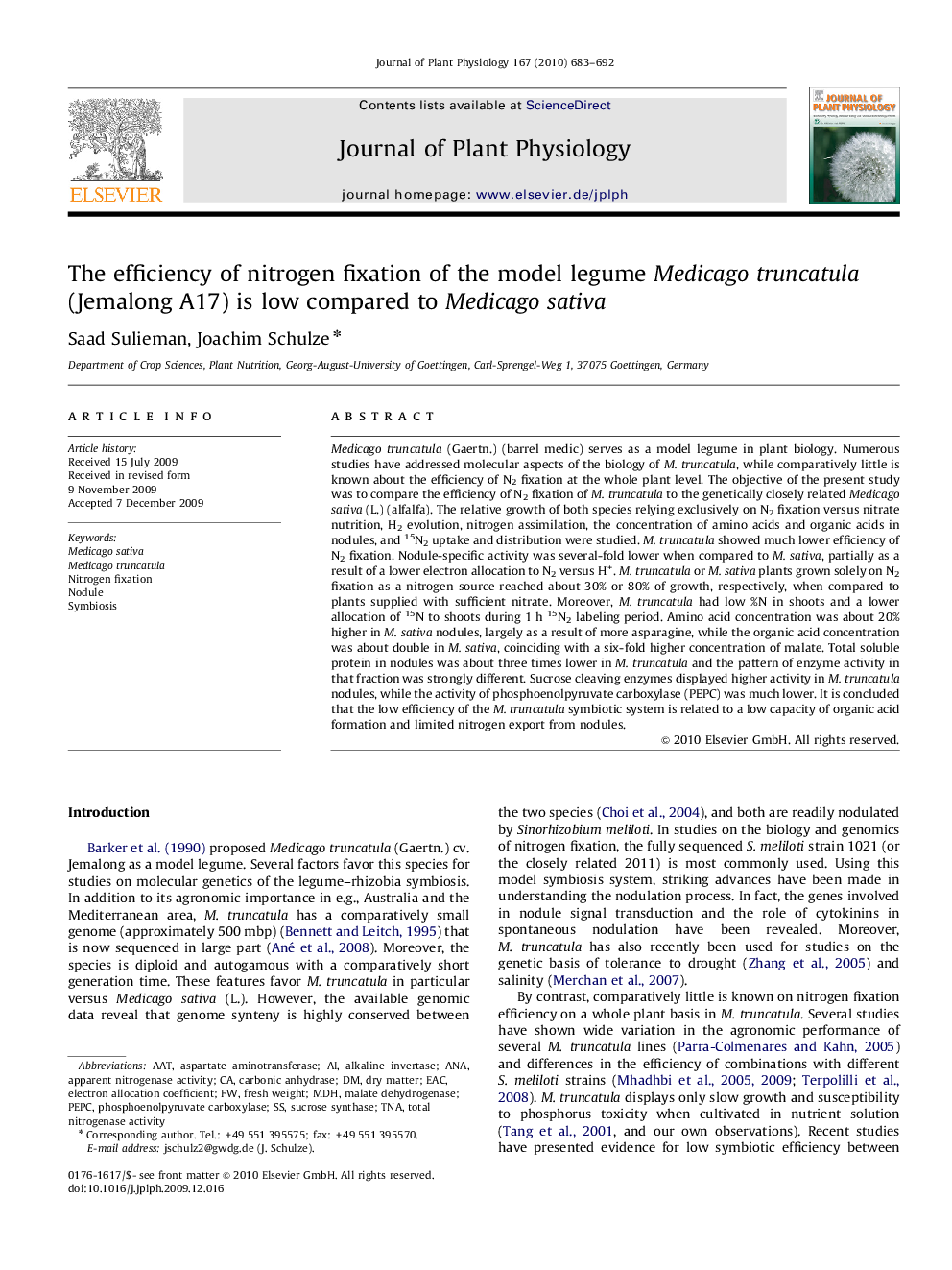| Article ID | Journal | Published Year | Pages | File Type |
|---|---|---|---|---|
| 2056834 | Journal of Plant Physiology | 2010 | 10 Pages |
Medicago truncatula (Gaertn.) (barrel medic) serves as a model legume in plant biology. Numerous studies have addressed molecular aspects of the biology of M. truncatula, while comparatively little is known about the efficiency of N2 fixation at the whole plant level. The objective of the present study was to compare the efficiency of N2 fixation of M. truncatula to the genetically closely related Medicago sativa (L.) (alfalfa). The relative growth of both species relying exclusively on N2 fixation versus nitrate nutrition, H2 evolution, nitrogen assimilation, the concentration of amino acids and organic acids in nodules, and 15N2 uptake and distribution were studied. M. truncatula showed much lower efficiency of N2 fixation. Nodule-specific activity was several-fold lower when compared to M. sativa, partially as a result of a lower electron allocation to N2 versus H+. M. truncatula or M. sativa plants grown solely on N2 fixation as a nitrogen source reached about 30% or 80% of growth, respectively, when compared to plants supplied with sufficient nitrate. Moreover, M. truncatula had low %N in shoots and a lower allocation of 15N to shoots during 1 h 15N2 labeling period. Amino acid concentration was about 20% higher in M. sativa nodules, largely as a result of more asparagine, while the organic acid concentration was about double in M. sativa, coinciding with a six-fold higher concentration of malate. Total soluble protein in nodules was about three times lower in M. truncatula and the pattern of enzyme activity in that fraction was strongly different. Sucrose cleaving enzymes displayed higher activity in M. truncatula nodules, while the activity of phosphoenolpyruvate carboxylase (PEPC) was much lower. It is concluded that the low efficiency of the M. truncatula symbiotic system is related to a low capacity of organic acid formation and limited nitrogen export from nodules.
